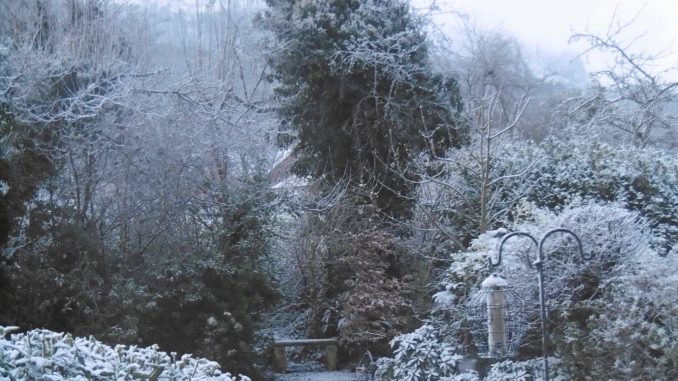

It’s either fascinating or terrifying watching Joe Biden slowly dissolve. It’s so public and getting so much dubious press coverage. Undoubtedly the man is showing disturbing signs of slowing down to a crawl and to hold such a vital role in world decisions makes it a nightmare. Trump’s overnight statements make him an unbelievable theatrical villain. Then Boris is sitting on the sidelines pretending not to bother knowing full well his conservative colleagues want him back to give the party some oomph. And who does Prince Harry think he’s fooling. How gracious of him to jet back to his father’s bedside to give him a cold kiss of comfort. I’m not one bit surprised William ignored the visit. I would love that family to come together and if it doesn’t happen due to Charles cancer illness it’s unlikely to happen at all.

31st January was a date to remember because 71 years ago it was a day which brought sorrow to families in Northern Ireland and in Scotland and heralded weeks and months of drama and mourning which continues to this day.
71 years ago a British Railways car ferry set sail across the North Channel to Larne, a routine journey of 31 miles taking somewhere in the region of two and a half hours. That’s on a normal day but in 1953 it was no normal day. Think destructive gale force winds such as we’ve experienced in recent weeks and you’ll get some idea of the conditions the ship tried to plough through, tragically the big seas were too much for the ferry. It was overwhelmed, the stern doors were stoved in by a huge wave and sea water poured into the car deck. There as no list of those on board but it was thought the Princess was carrying 127 passengers and 49 crew. She left the Scottish port just before 8 a.m. heading into Loch Ryan but didn’t get much further; once into the Irish Sea Captain Ferguson realised the ferocious conditions and decided to return to the comparative shelter of Loch Ryan but before that could happen the waves were filling the ship. He made the disastrous decision to proceed to Larne. At 9.46 the call went out asking for tugs to assist; at 10.32 an SOS was sent – the ship was in immediate danger with a heavy list to starboard.
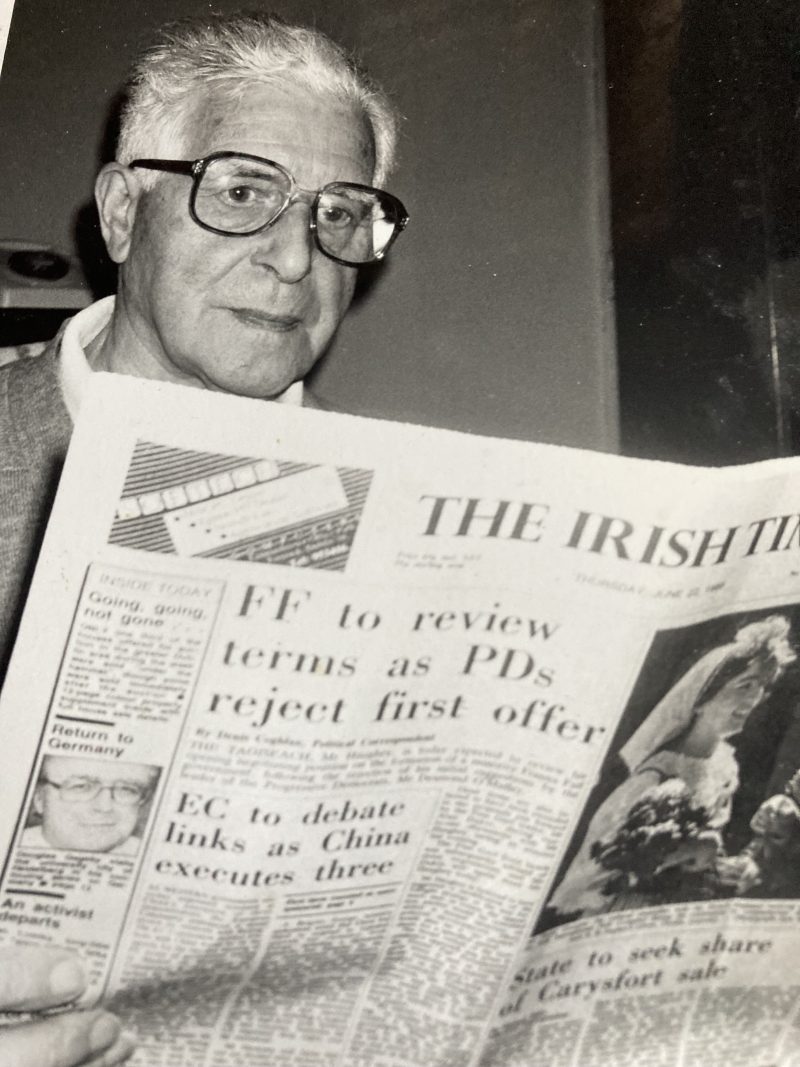
Terror On Board
As the bitter water began to fill the interior of the ship, can you imagine what was going on in the cabins and lounges, families, businessmen, young women, children and the crew all knowing they were facing death by drowning? Bad enough to be sea sick but the fear of ending up in the freezing waves must have caused dreadful panic, hysterical crying, brave attempts to keep people calm. By one o’clock the water had reached the starboard engine room and ten minutes later, David Broadfoot, the ship’s radio officer, sent a morse code message: ‘On her beam end’. Then the dreadful call: ‘We are preparing to abandon ship.’ But then came some hope, by one thirty the Irish coast was in sight, they were only five miles off the Copeland islands. 20 minutes later there was silence and it’s thought that the ship sank at 13.58 hours.
That morning journalist Malcolm Brodie, himself a Scotsman, had made his way to the empty sports desk at the Belfast Telegraph. He was down to report on a football game but the team from Airdrie cancelled due to the weather. A phone rang and he reached for it. “It was a woman on the Antrim Road,” he told me. “She said her husband was a sea captain and they’d shortwave radio. ’There’s a drama in the Lough’. She gave me what details she had and it sounded like the Princess Victoria was battling against big seas. She was right. The ship was fighting hurricane winds of Force 12, over 100 miles an hour, tossing in mountainous seas when the huge waves battered the rear doors, sheering off the bolts, flooding the car deck; tonne upon tonne of seawater swamped the ship and some 135 souls lost their lives. All women and children on board the ship were lost.
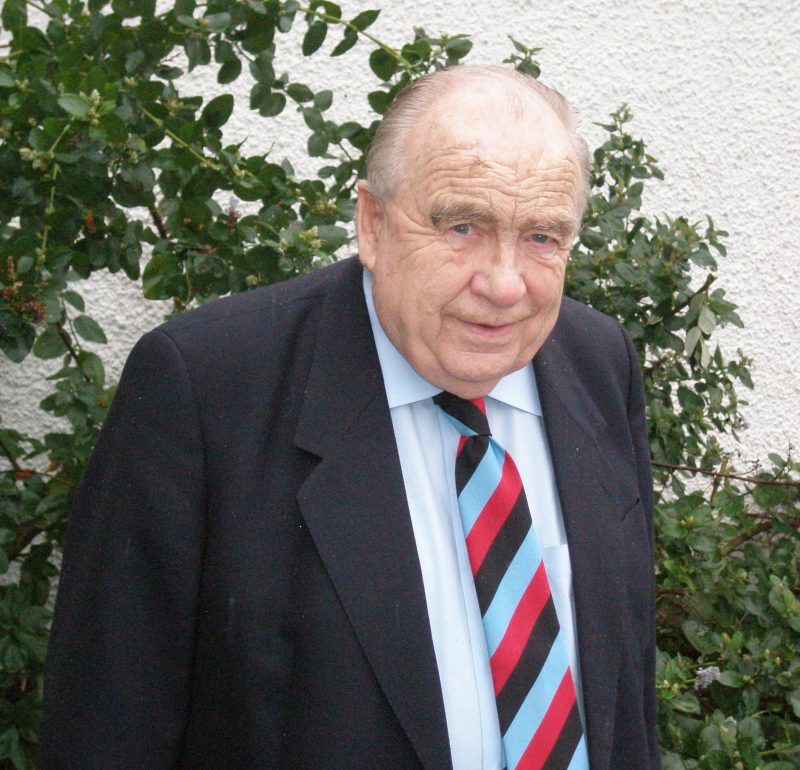
Hearing History Unfold
“I immediately went up to her house and sat with the radio in a wee cubby hole under the stairs as she made cups of tea.”
Later that afternoon fellow journalist Paddy Scott was on the fringe of Donaghadee as survivors were bought into the Imperial Hotel; despite tight security, he was determined to get his story. Someone whispered that there was a terrified young cabin boy in a traumatic state, jibbering in his fear. “Let me try to talk to him,” Paddy suggested to the policeman on duty. “He’s probably from the Islands and he’s talking Scottish Gaelic.” This was enough to gain entrance. “Leave me with him till I calm him,” commanded Paddy. They did, not realising he was a reporter. Paddy was right, the boy would only talk in his native tongue and with the journalist’s Irish Gaelic they got down to business.
Paddy arranged for the boy to be looked after as he hi-tailed it back to his desk to file the harrowing account of the death of the Larne-Stranraer ferry for the Irish Press and the Irish News, his story beating every other journalist to the front page.
From the Antrim Road, for two and a half hours Malcolm filed his report down the telephone line to the Belfast Telegraph, the first time the Saturday Night front page carried news instead of sport. Two men who ensured the tragedy on the 31st January 1953 would never be forgotten.
Stranger Than Fiction
This from my friend Houston Marshal
“A perfect example of big brother at work. We were reading my Friend Anne Hailes weekly blog as I do every Sunday morning, really is worth a visit, and in the background Sunday Brunch was on television. A guest was talking about honey and I said to my friend that I had watched a similar story about honey the other day. I finished Anne’s blog which she posts on Facebook, I closed her posting and lo and behold the next 2 adverts to pop up on my screen are about honey and honey products. SCAREY STUFF !!
Beauty Revealed
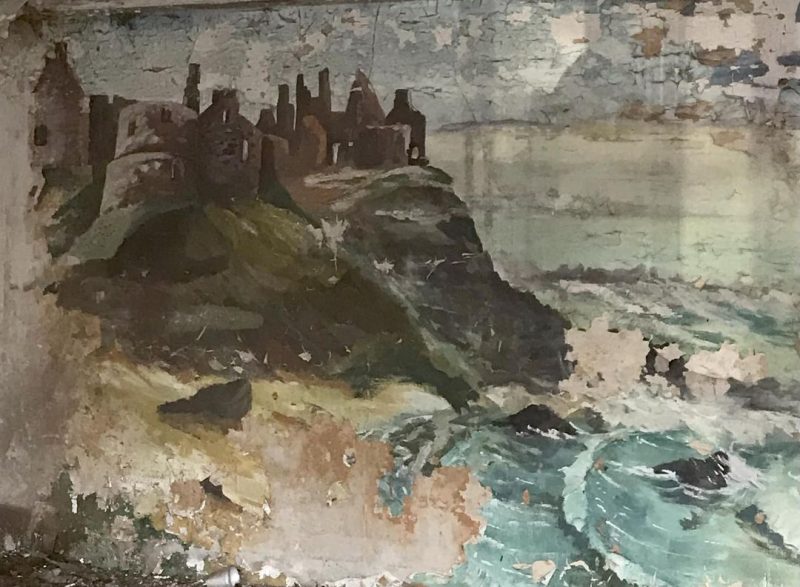
The recent gales have blown down a hoarding in front of a derelict Bushmills shop and revealed this painting on a wall, painted by Brian Willis over 30 years ago. It’s a large image perhaps 12 feet wide of nearby Dunluce Castle.
“Old age and the crumbling plaster has given the picture an interesting distressed charm. So much so that this photo has appeared on a history of the area Facebook site.” He explained, “The shop was vacant years ago when I was asked to paint “something” on the wall to cheer it up. It was used as a temporary office for a village festival.” Photo Kenny Stewart
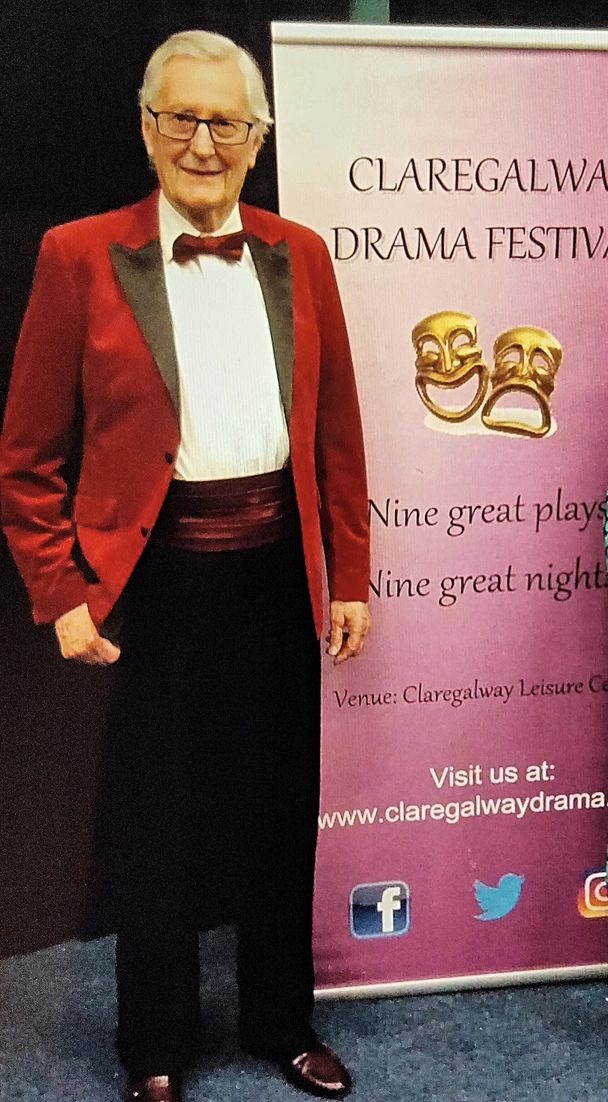
Michael Poynor is a man of the theatre and this director and member of the Association of Drama Adjudicator has introduced the art of communication for audiences. After my writing about audio description on television, Michael sent this message. “Audio description and captioning, now widely used in theatre, especially Lyric, Opera House, Abbey (Dublin) and Bord Gais (Dublin) … has made theatre accessible to so many, not only deaf or blind, but those who, largely through aging, have reduced aural or optical abilities and can therefore continue a lifelong enjoyment of live theatre.”

Good luck Ireland in your rugby game this afternoon, not able to watch but my mobile phone will be in my pocket for a quick shifty every ten minutes.
